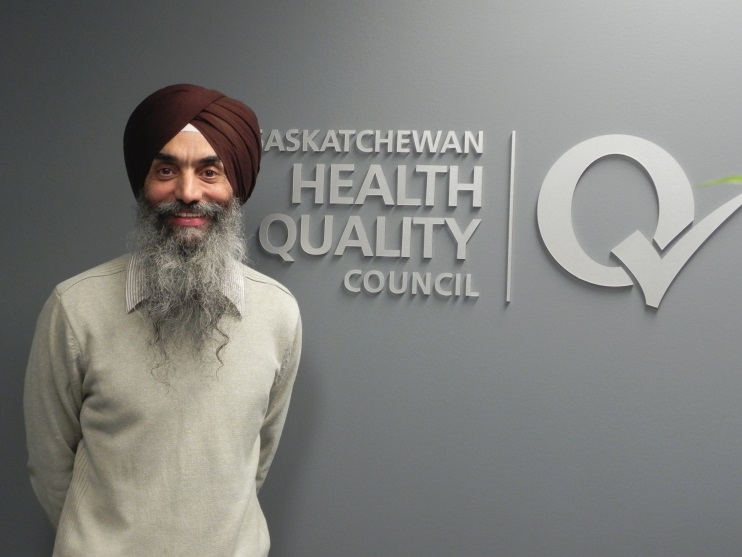Nirmal Sidhu is a research analyst at the Health Quality Council
The Saskatchewan Health Quality Council is introducing its staff members, and their work, to the public, through the Meet the Researcher/Meet the Research Analyst series that is posted to the HQC website. The February 2015 edition features Nirmal Sidhu.
Nirmal received his Master of Science (Hons.) degree in economics with distinction from the Guru Nanak Dev University in Amritsar, India, and his Master of Arts degree in health economics from the University of Calgary. Before moving to Canada, he worked as a health economist in India, where his research focused on performance evaluation of hospitals in the province of Punjab.
In 2004, Nirmal joined the Health Quality Council, where he has served as a research analyst on various projects. Currently his focus is on patient experience surveys in acute care, primary care and emergency departments, and quality of care indicators in different areas of care in Saskatchewan. Below, Nirmal talks about his work at HQC, and something he’s grown to love since moving to Canada – winter!
Your focus at HQC is on patient experience surveys. What work do you do on the surveys?
I work on analysis, preparing reports and updating our Quality Insight website, at www.qualityinsight.ca, with these reports. In other words, I help bring the voice of Saskatchewan people to health care providers and the general public.
Why are these patient experience surveys important to the health system?
The surveys help the public and care providers understand, from a patient perspective, where we stand in terms of quality of care. As we are developing a “patient first” culture in Saskatchewan, it is absolutely necessary to know what the patients say. The surveys include questions on topics such as communication with doctors or nurses, responsiveness, cleanliness, food quality, overall service and discharge planning. As a result of the surveys, providers can know what went well and where improvement work is needed.
What do people working in the health system learn from the surveys?
Capturing and reporting on patients’ experiences during an episode of care is part of HQC’s work. The survey questions are selected in consultation with care providers; therefore, the survey results help guide them on their quality improvement journeys. In particular, it helps them in two ways. First, they can understand the quality of care that is being provided from a patient perspective. Second, they can observe if any improvement efforts are producing sustainable and lasting changes in the care that is being provided. Presently, we are able to update the survey results every month within five to seven business days. Therefore, around the 10th of every month, people can see the results of the past month. You also work on analyzing and preparing indicators that are posted to HQC’s Quality Insight website. What is involved in this work?
Quality Insight is a website that is available to everyone – members of the public, care providers, managers and leaders. The site brings together performance data from our province’s health system, and it is visualized so that users can see the performance of the system over time. My work on Quality Insight involves the ability to analyze data and produce graphs that will be informative to people who need to understand the quality of health care in Saskatchewan, as well as good time management so that reports are developed in a timely fashion. Why are these indicators important to the health system?
We are helping people working in the system understand if an improvement has really happened and if the improvement is lasting. This requires observing patterns over time. Run charts are graphs of data over time used in assessing the effectiveness of change. For example, a health care facility can monitor the quality of care being provided. They can use run chart methodology to understand whether their efforts to improve the quality of care are being sustained or if there is just random variation here and there.
You joined the Health Quality Council more than a decade ago, back in 2004. What do you like about working at HQC?
I like the freedom of flexible working hours. As a research analyst I have particular work to do, but it doesn’t always need to get done between 8:30 a.m. and 4:30 p.m. every day. The people are nice here, and HQC offers a learning environment without any finger pointing. What are some of your interests outside of work?
After staying so long in Saskatchewan, I fell in love with winter. Therefore, I am learning to ski!



